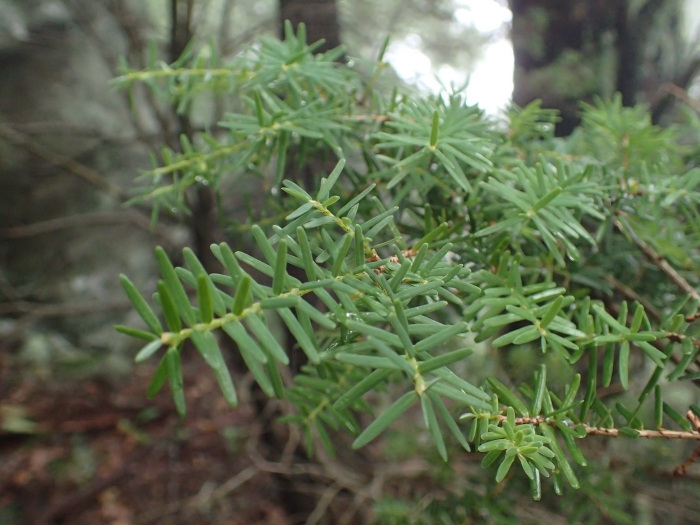Carolina Hemlock
(Tsuga caroliniana)
Carolina Hemlock (Tsuga caroliniana)
/
/

Evan M. Raskin
CC BY 4.0
Image By:
Evan M. Raskin
Recorded By:
Copyright:
CC BY 4.0
Copyright Notice:
Photo by: Evan M. Raskin | License Type: CC BY 4.0 | License URL: http://creativecommons.org/licenses/by/4.0/ | Rights Holder: Evan M. Raskin | Publisher: iNaturalist | Date Created: 2017-06-16T12:20:29-07:00 |


















Estimated Native Range
Summary
Tsuga caroliniana, commonly known as Carolina Hemlock, is an evergreen tree native to the Appalachian Mountains, particularly found in cool, moist ravines and on rocky slopes in the Southeastern United States. It can reach a height of 65 feet and a width of 20-25 feet. The Carolina Hemlock has a conical form with dense, dark green foliage and fine-textured needles. It produces small, inconspicuous cones and has a rugged, furrowed bark that adds to its visual interest. This species is less common than the Eastern Hemlock but is valued for its ornamental qualities and adaptability to various soil conditions.
Carolina Hemlock is appreciated for its graceful, pyramidal shape and is often used in residential landscapes for screening and as a specimen tree. It is also suitable for naturalistic plantings and as an evergreen accent in larger gardens. The tree prefers part shade to full shade and requires medium amounts of water with well-drained soil. It is more tolerant of heat and drought than the Eastern Hemlock, making it a better choice for southern climates. While it has a deep taproot, which allows for easier underplanting, it is still susceptible to the Hemlock Woolly Adelgid, an invasive pest that can cause significant damage. Gardeners should monitor for infestations and be prepared to use appropriate control measures.CC BY-SA 4.0
Carolina Hemlock is appreciated for its graceful, pyramidal shape and is often used in residential landscapes for screening and as a specimen tree. It is also suitable for naturalistic plantings and as an evergreen accent in larger gardens. The tree prefers part shade to full shade and requires medium amounts of water with well-drained soil. It is more tolerant of heat and drought than the Eastern Hemlock, making it a better choice for southern climates. While it has a deep taproot, which allows for easier underplanting, it is still susceptible to the Hemlock Woolly Adelgid, an invasive pest that can cause significant damage. Gardeners should monitor for infestations and be prepared to use appropriate control measures.CC BY-SA 4.0
Plant Description
- Plant Type: Tree
- Height: 45-60 feet
- Width: 20-25 feet
- Growth Rate: Slow
- Flower Color: N/A
- Flowering Season: Non-Flowering
- Leaf Retention: Evergreen
Growth Requirements
- Sun: Part Shade, Full Shade
- Water: Medium
- Drainage: Fast, Medium
Common Uses
Bank Stabilization, Bird Garden, Butterfly Garden, Fragrant, Hedges
Natural Habitat
Native to cool, moist ravines and rocky slopes in the Appalachian Mountains
Other Names
Common Names: Southern Hemlock, Carolina-Hemlocktanne, Hemlock De Caroline, Pruche De La Caroline, Karolinai Hemlokfenyo, Tsuga Della Carolina, Тсуга Каролинская (Tsuga Karolinskaya), 加罗林铁杉 (Jia Luo Lin Tie Shan), Karolinska Cuga
Scientific Names: , Pinus caroliniana, Tsuga caroliniana, Abies caroliniana, Tsuga caroliniana f. compacta, Tsuga caroliniana var. compacta,
GBIF Accepted Name: Tsuga caroliniana Engelm.